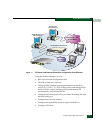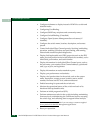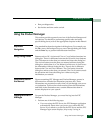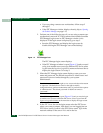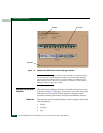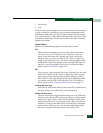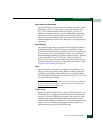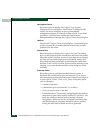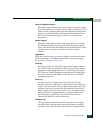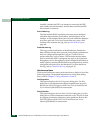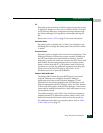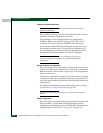
1
Using the Product Manager
1-17
Product Manager Overview
Fabric Operating Parameters
Use this dialog box to set parameters for fabric operation. In this
dialog box, you can set the resource allocation time-out value
(R_A_TOV) and error detect time-out value (E_D_TOV) in
tenth-of-a-second increments, as well as other fabric operating
parameters, such as switch priority level (Principal, Default, or
Never Principal) and interop mode. You must take the switch
offline through the Set Online State dialog box to configure these
parameters.
Switch Binding
This submenu provides two options if the SANtegrity feature is
installed through the Configure Feature Key dialog box: Change
State and Edit Membership List. Selecting Change State displays the
Switch Binding State Change dialog box where you can activate
Switch Binding according to a specific connection policy (Restrict
E_Ports, Restrict F_Ports, or All Ports). Edit Membership List
allows you to create a list of switches and devices that you want
to allow exclusively to attach to switch ports. For details, refer to
Configure Switch Binding on page 3-9.
Ports
Select this option to display the Configure Ports dialog box. For
each port you can provide a name, block or unblock operation,
configure port binding, enable LIN alerts for each port, enable
Fabric Address Notification (FAN), define a type (G, F, E, Gx, and
Fx), and enable port binding.
Ports are automatically configured as G_Ports if no device is connected,
F_Ports if a device is connected, E_Ports if a switch is connected, and
FL_Port if connected to a loop device.
SNMP Agent
Select this option to display the Configure SNMP dialog box. Use
this dialog box to configure network addresses and community
names for up to six SNMP trap recipients. Also authorize write
permissions to enable SNMP management stations to modify
writable MIB variables. In addition, you can enable authorization
traps to be sent to management stations when unauthorized
stations request access to switch SNMP data.



